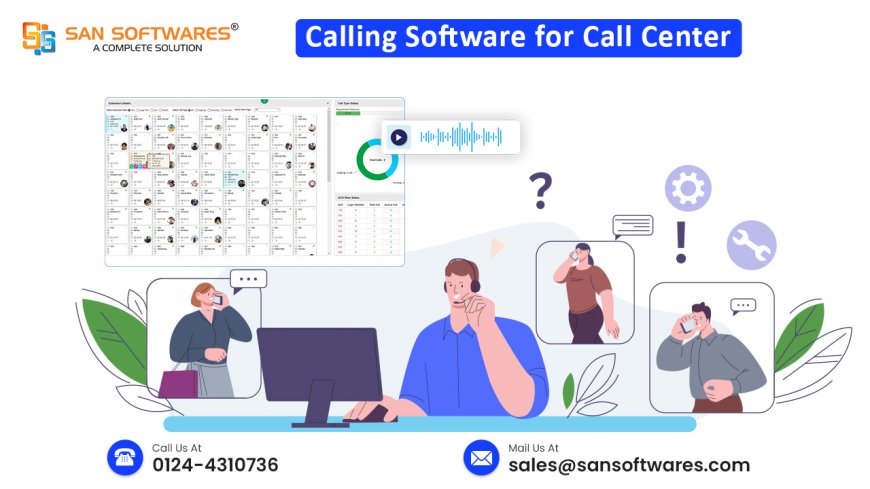How to Start a Virtual Call Center in 2024

Starting a virtual call center in 2024 can be a highly effective way to streamline customer support and enhance your business operations. With the increasing reliance on remote work and digital communication tools, a virtual call center offers flexibility, cost savings, and access to a global talent pool. Here’s a comprehensive guide to help you establish a successful virtual call center.
Determine Your Objectives
Before diving into the logistics of setting up a call center, defining your primary goals is crucial. Ask yourself why you need a call center and what you aim to achieve with it. Your objectives might include enhancing lead generation, acquiring new customers, simplifying payment and order processing, or improving overall customer support.
For small businesses and startups, the focus might be on driving sales and growth. Larger companies might prioritize customer satisfaction and efficient problem resolution. Defining these goals will help you tailor your call center operations to meet specific needs.
Set Your Budget
Establishing a budget is a fundamental step in setting up a call center. Determine how much you can invest in your call center operations, including costs for staffing, office space (if needed), and technology.
Consider the following factors:
-
Team size: How many agents will you need to handle your call volume?
-
Office space: Will you need a physical location, or can your team work remotely?
-
Tools and software: What type of call center software and hardware will you require?
Compiling your monthly income streams, fixed expenditures, and variable expenses will give you a clearer picture of your financial capacity. If a physical call center is not feasible, a virtual call center could be a more cost-effective option.
Decide the Call Center Type
The type of call center you choose will depend on your business needs. There are primarily two types of call centers:
-
Inbound Call Centers: These handle incoming calls from customers seeking support or information. They are ideal for:
-
Product and technical support
-
Order and payment processing
-
Inquiries about upgrades and renewals
-
Outbound Call Centers: These make outgoing calls to potential or existing customers. They are suitable for:
-
Telemarketing
-
Telesales
-
Lead generation
-
Appointment scheduling
You can also opt for a hybrid call center that handles both inbound and outbound calls, providing a versatile solution to meet various business requirements.
Choose Between On-Site and Virtual Call Centers
On-site call centers are physical locations where all employees work together, allowing for face-to-face communication and easier management. However, they come with higher costs related to office space and maintenance.
Virtual call centers, on the other hand, operate in the cloud, with agents working remotely. This model offers several advantages:
-
Access to a global talent pool: Hire the best candidates regardless of their location.
-
Flexible working hours: Agents in different time zones can provide extended customer service hours.
-
Cost savings: Reduce expenses on office space and infrastructure, allowing you to invest more in technology and employee benefits.
Virtual call centers rely heavily on robust call center software to manage operations efficiently.
Assemble Your Team
Hiring the right people is crucial to the success of your call center. Look for candidates who possess strong communication skills, problem-solving abilities, and a customer-centric attitude. Define clear job requirements and consider the following:
-
Flexibility: Can they work varying shifts if needed?
-
Experience: How much prior experience do they need?
-
Personality: Are they able to engage with customers effectively?
Provide comprehensive training to ensure your agents are well-prepared to handle customer interactions professionally.
Train Your Agents and Supervisors
Training is essential to equip your agents with the skills and knowledge they need to excel. This includes training on the use of headsets, phone systems, and Call Center Software. Ensure that agents understand the tools and platforms they will be using, whether they are working on-site or remotely.
Consider developing a call center script to maintain consistency in customer interactions and brand messaging. Additionally, train supervisors to monitor performance, provide feedback, and support agents effectively.
Invest in Necessary Software and Tool s
Selecting the right call center software is critical to the success of your operations. Inbound Call Center Software helps manage incoming calls efficiently, ensuring customer queries are resolved promptly. Key features to look for in call center software include:
-
Automated Call Distribution (ACD): Routes calls to the appropriate agents based on predefined criteria.
-
Interactive Voice Response (IVR): Allows customers to interact with a computer-operated phone system to direct their call to the right department.
-
Real-Time Analytics: Provides insights into call center performance, helping you make data-driven decisions.
-
CRM Integration: Seamlessly integrates with customer relationship management systems to provide agents with comprehensive customer information.
Additionally, consider tools for accounting, knowledge management, and workforce optimization to enhance overall efficiency.
Implement Business Process Outsourcing (BPO)
If your call center experiences high call volumes, outsourcing some of your operations to a third-party service provider can be beneficial. BPO services can handle both inbound and outbound calls, providing support for market research, telemarketing, order fulfillment, and more.
Outsourcing can be particularly useful when you need to scale operations quickly without the hassle of hiring and training new employees. Ensure that the BPO provider you choose has experience in your industry and a strong track record of delivering quality service.
Foster a Positive Work Culture
Creating a supportive and engaging work environment is essential for retaining top talent and maintaining high levels of productivity. Here are some tips:
-
Effective Leadership: Maintain a calm demeanor and provide clear guidance to your team.
-
Regular Check-Ins: Communicate frequently with your agents to address any issues and offer support.
-
Employee Recognition: Acknowledge and reward outstanding performance to motivate your team.
A positive work culture not only boosts employee satisfaction but also enhances customer service quality.

 aditirajput
aditirajput